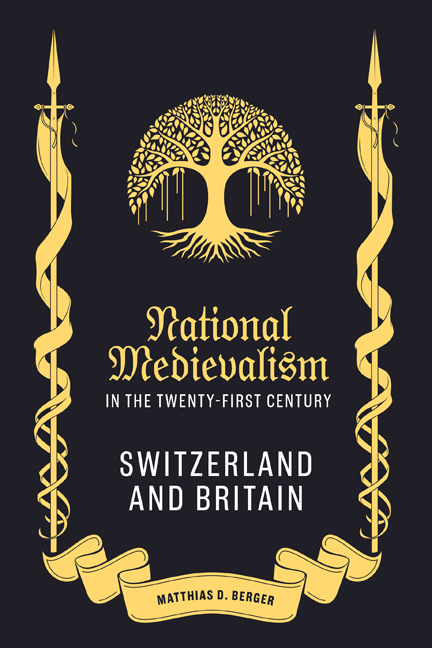Book contents
- Frontmatter
- Dedication
- Contents
- List of Illustrations
- Acknowledgements
- Author’s Note
- List of Abbreviations
- Introduction
- 1 Constructing Continuity: Four Nations Imagine Their Beginnings
- Part I The Politics of Autochthony
- 2 For Freedom Alone: The Scottish Independence Referendum
- 3 2016 and All That: Brexit
- 4 Freiheit statt Vögte: The Swiss National-Conservatives
- Part II The Others of National Medievalism
- 5 Masculine Middle Ages: Gender
- 6 In Strange Lands: Race, Ethnicity, Immigration
- Conclusion: The Demands of the Past
- Afterword: National Medievalism in the Age of COVID-19
- Bibliography
- Index
- Medievalism
1 - Constructing Continuity: Four Nations Imagine Their Beginnings
Published online by Cambridge University Press: 17 December 2023
- Frontmatter
- Dedication
- Contents
- List of Illustrations
- Acknowledgements
- Author’s Note
- List of Abbreviations
- Introduction
- 1 Constructing Continuity: Four Nations Imagine Their Beginnings
- Part I The Politics of Autochthony
- 2 For Freedom Alone: The Scottish Independence Referendum
- 3 2016 and All That: Brexit
- 4 Freiheit statt Vögte: The Swiss National-Conservatives
- Part II The Others of National Medievalism
- 5 Masculine Middle Ages: Gender
- 6 In Strange Lands: Race, Ethnicity, Immigration
- Conclusion: The Demands of the Past
- Afterword: National Medievalism in the Age of COVID-19
- Bibliography
- Index
- Medievalism
Summary
‘You build a country like you build a cathedral, from the ground up!’
THE PURPOSE OF this chapter is to provide a sense of the respective breadth and depth of contemporary English, Scottish, Swiss and Welsh national medievalism. The aim is representativeness, not exhaustiveness: while I attempt to make visible the trends and emphases that have emerged in national medievalism since the turn of the century, I explore in some depth those examples I consider particularly relevant to this historical moment.
There are many ways the medieval foundations of modern nationhood can be, and have been, imagined. Continuity is, in this context, a narrative strategy designed to make sense of the passing of time and its effect on the national self. The use of continuity in discourses of identity frequently comes with normative claims, spoken or unspoken, such as the claim that unbroken continuity confers validity and authority on those who deploy it, and the longer the continuity, the greater the validity and authority it confers. It is indisputable that besides continuity there was massive change and rupture (cultural, religious, social, political, economic and so on) between the Middle Ages – themselves a highly diverse millennium of history! – and the present day. This chapter is concerned with some of the most effective strategies used today to manage and qualify such change and rupture, clearing the way for memories of the Middle Ages to shape modernity.
Eviatar Zerubavel has usefully described a set of common mnemonic ‘bridges’ which people use to ‘integrate temporally noncontiguous manifestations of what we nevertheless consider “the same” entity (person, organisation, nation)’. In other words, Zerubavel's bridges highlight the kinds of techniques that help to maintain a continuous (group) identity. One of these techniques is a thematic focus on the notions of ancestry and descent themselves, which I have argued are fundamental to national medievalism. Another relies on the ability of place to ‘store’ memory and become a physical memory site. Some of the most successful mnemonic bridging operates with the apparent sameness of place, interaction with which promises direct access to an ‘authentic’ past. A third technique is that of ‘same’ time, which relies on the suggestive power of recurring numbers, with anniversaries enabling a ‘periodic fusion with the past’.
- Type
- Chapter
- Information
- National Medievalism in the Twenty-First CenturySwitzerland and Britain, pp. 32 - 76Publisher: Boydell & BrewerPrint publication year: 2023

